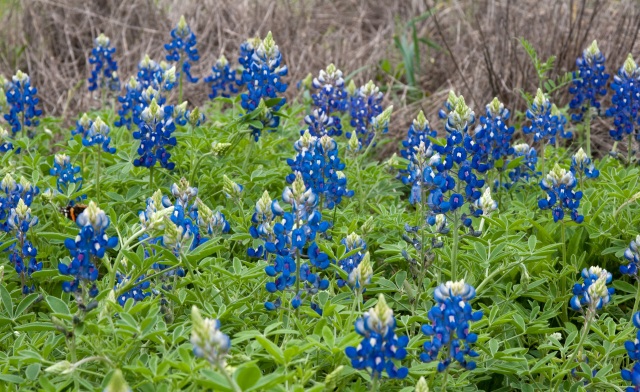Spring Terrain #64

Lupinus texensis “Bluebonnet”
Texans are proud. They are stubborn on many points, and insistent on their individuality (even if it’s vaguely fictional). Not content to be one in a field of fifty, dammit, this is the Lone Star State. They refuse to even call their state flower by its actual name: the lupine. No, here it is the Bluebonnet.
I remember reading about the Lupine Lady over and over again as a child, wanting to be a part of Miss Rumphius’s multicolored spring hillsides but knowing I didn’t have the heart (or warm toes) to last through New England winters. Because Texans insist on renaming things that already exist in the popular imagination of other cultures or imposing their own non-phonetic pronunciations, I didn’t know I now lived in such a place until I looked up the flower’s botanical name. I was on a quest for more information about this iconic flower that started popping up everywhere: highway off-ramps, parking lot dividers, UT’s campus, and the meadows at Zilker Park.
The Bluebonnet is a sub-species of lupine, lupinus texensis, to be exact. Its distinctive indigo petals radiate in cone-shaped candelabras and wash the hillsides (and parking lots) of Texas in color—the first in an explosion of wildflowers to come. I am amazed this flower can turn an asphalt oblong into something beautiful, that its beauty derives from both a complex individual structure and a uniformity in collective growth. It’s an annual plant that resows its own seeds after a brief life cycle jumpstarted by the spring rains. It is imperative for their survival to bloom and flower in a brief window of opportunity at the very beginning of spring, in the space left behind by some trauma inflicted on the landscape: fire or aggressive mowing. We are here to witness it and to marvel in this beautiful struggle for permanence, for renewal, for the future.
Like many things in a Texas spring, the bluebonnets appear with fanfare, blaze out their color and then are gone in the span of a few weeks. Their showy blossoms have served the purpose of attracting pollinators, falling to the earth as the rest of the plant draws in nutrients to form seeds. We will have to wait for next year to see them again, and then only if the rain comes back.